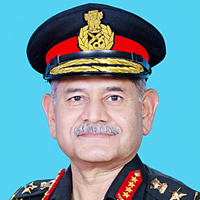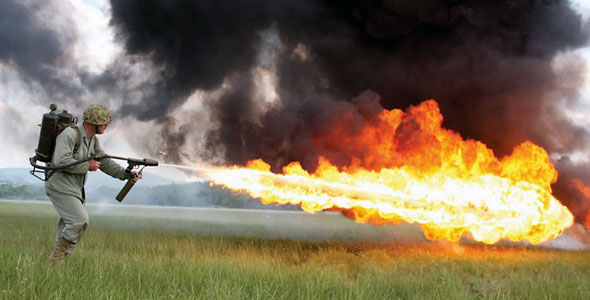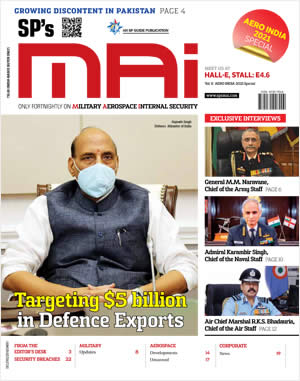INDIAN ARMED FORCES CHIEFS ON OUR RELENTLESS AND FOCUSED PUBLISHING EFFORTS

The insightful articles, inspiring narrations and analytical perspectives presented by the Editorial Team, establish an alluring connect with the reader. My compliments and best wishes to SP Guide Publications.

"Over the past 60 years, the growth of SP Guide Publications has mirrored the rising stature of Indian Navy. Its well-researched and informative magazines on Defence and Aerospace sector have served to shape an educated opinion of our military personnel, policy makers and the public alike. I wish SP's Publication team continued success, fair winds and following seas in all future endeavour!"

Since, its inception in 1964, SP Guide Publications has consistently demonstrated commitment to high-quality journalism in the aerospace and defence sectors, earning a well-deserved reputation as Asia's largest media house in this domain. I wish SP Guide Publications continued success in its pursuit of excellence.
- Indian Air Force Aims for Full Indigenous Inventory by 2047 — Air Chief Marshal A.P. Singh
- General Upendra Dwivedi takes over as the Chief of the Army Staff
- Rajnath Singh assumes charge as Defence Minister for the second consecutive term
- Admiral Dinesh K. Tripathi assumes Command of the Indian Navy as 26th Chief of the Naval Staff
- Prime Minister witnesses 'Bharat Shakti' – a Tri-Services Firing and Manoeuvre Exercise in Pokhran, Rajasthan
Indian Army wants combat flame-throwers
March 31, 2014: The Indian Army's Directorate of Infantry has announced its intention to procure an unspecified number of combat disposable-type flame-throwers for fighting units deployed in counter-insurgency areas. The Army has revealed the flame throwers will be used during conventional and sub conventional operations against hostile elements as well as for training purposes. The shape and size of the flame thrower should be such that it can comfortably be carried and used by a single soldier. It should be stable for storage for the complete shelf life and should not be prone to accidents while in storage or being transported under operational conditions. The maximum and the minimum range at which Flame Thrower (Disposable) can effectively engage targets will need to be produced as information by interested suppliers. The requirement is a surprising one, given that military flamethrowers aren't much in use anymore. For instance, the US military discontinued the use of flamethrowers for combat operations in 1978, and they do not figure in any current arsenals. Flamethrowers were used in the World Wars and the Vietnam War extensively, but were subsequently found to be ineffective in most operational scenarios, given their close-combat requirement. The Indian Army will be looking to use them against bunkers, fortifications, built-up areas to flush out terrorists etc.






